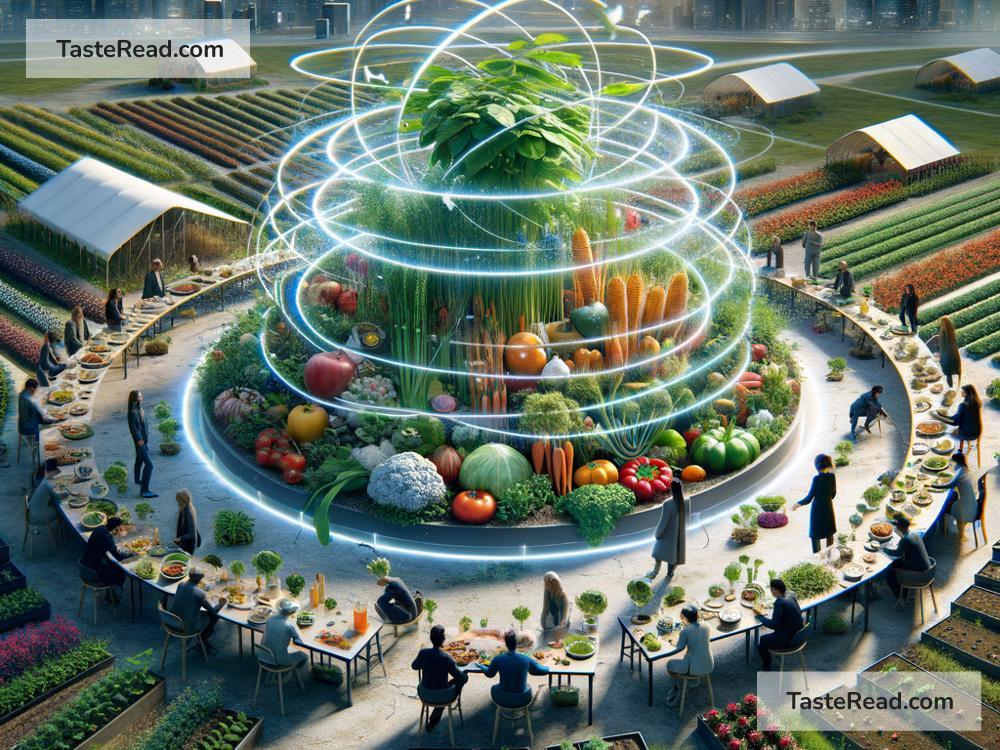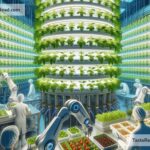The Future of Food and the Wisdom of Indigenous Knowledge
Food is central to human life. It nourishes us, brings communities together, and connects us to the earth. As we look to the future of food, we face challenges like climate change, population growth, and the need for sustainable farming. Yet, one path forward could lie in something ancient: indigenous knowledge. By combining modern science with the wisdom of traditional practices, we can transform how we grow, share, and understand food.
Why Food Systems Need to Change
The world’s population is growing rapidly, and researchers estimate there will be nearly 10 billion people by 2050. To provide food for everyone, agriculture must become more efficient, less harmful to the environment, and more resilient to changing weather patterns.
Right now, modern farming relies heavily on practices like using chemical fertilizers, pesticides, and large-scale monoculture crops (growing one type of crop over large areas). While this system produces high yields, it creates long-term problems. Soil becomes depleted of nutrients, biodiversity is lost, and ecosystems are disrupted. Even worse, industrial agriculture contributes significantly to climate change through carbon emissions and deforestation.
On top of these challenges, farmers around the world are dealing with unpredictable weather. Droughts, floods, and rising temperatures threaten crops and livestock. It’s clear that our current food system needs rethinking.
Indigenous Knowledge: A Treasure of Wisdom
Indigenous peoples have been cultivating food and caring for the land for thousands of years. Their traditions are rooted in deep respect for nature and an understanding of how ecosystems work. This knowledge—passed down through generations—can teach us important lessons about sustainability.
One example is polyculture farming. Many indigenous communities grow multiple crops together instead of focusing on just one. This method mimics how plants grow naturally in the wild, keeping the soil healthy and reducing the need for chemical inputs. Polyculture farms are also more resilient to pests and extreme weather because they rely on diversity to keep the ecosystem balanced.
Another valuable tradition is seed saving. Indigenous farmers have a strong connection to native plants and keep seeds from each season to replant the next year. Over time, these seeds adapt to local conditions, making them more resistant to droughts, pests, and diseases. These “climate-smart” seeds are becoming increasingly important as global temperatures rise.
Agroforestry—an indigenous practice that combines trees with crops—is yet another powerful tool. Trees provide shade, protect the soil from erosion, and act as windbreakers. Their roots stabilize the land and preserve water. Additionally, some indigenous foods, like nuts, fruits, and medicinal plants, grow naturally within these systems, creating balance and variety.
What the Future Could Learn From the Past
The future of food may depend on our ability to integrate indigenous practices with modern technologies. Scientists and researchers are starting to collaborate with indigenous communities to better understand their techniques and adapt them to current farming systems.
Take, for example, precision agriculture. This modern method uses technology like sensors, GPS, and drones to monitor crops and water usage more efficiently. By combining this technology with indigenous techniques like polyculture or agroforestry, farmers can maximize yields without harming the environment.
Similarly, global food organizations are working to protect native crops—like quinoa, amaranth, and millet—that indigenous people have been growing for centuries. These crops are highly nutritious, adaptable to harsh climates, and can play a key role in feeding the world sustainably. Promoting these foods while respecting the people and cultures they come from is vital.
Indigenous Knowledge and Food Security
Food security means having reliable access to enough nutritious food. Indigenous knowledge holds the key to building stronger food systems for the future. For example, understanding how native plants thrive in different climates can help farmers increase food production in regions facing hunger or famine.
In addition, indigenous communities often live in harmony with the land, using resources sparingly and avoiding waste. This mindset encourages a less consumer-driven food culture, which is crucial for reducing the environmental impact of agriculture.
Protecting Indigenous Knowledge
While indigenous wisdom has immense benefits, one challenge is ensuring it is respected. Too often, the contributions of indigenous communities are overlooked or exploited without proper acknowledgment or compensation. It is crucial that governments, organizations, and individuals recognize and protect the rights of indigenous peoples to their land, resources, and traditional practices.
Collaborating with indigenous communities must be done thoughtfully and respectfully, ensuring their voices are heard and their knowledge isn’t used for profit without their permission.
Moving Forward
The future of food is not just about growing enough to eat—it’s about growing in harmony with the planet. Indigenous knowledge teaches us how to do this. It reminds us of the importance of balance, diversity, and respect for nature. While technology plays a role in solving food challenges, we cannot forget the wisdom found in ancient traditions.
As we move forward, we should embrace indigenous knowledge and the people who hold it, not as a relic of the past, but as a guide to the future. Together, modern science and traditional practices can build a food system that is sustainable, equitable, and resilient.
By learning from those who have cared for the earth for generations, we can create a world where everyone has access to nutritious food—while protecting the land for generations to come.


